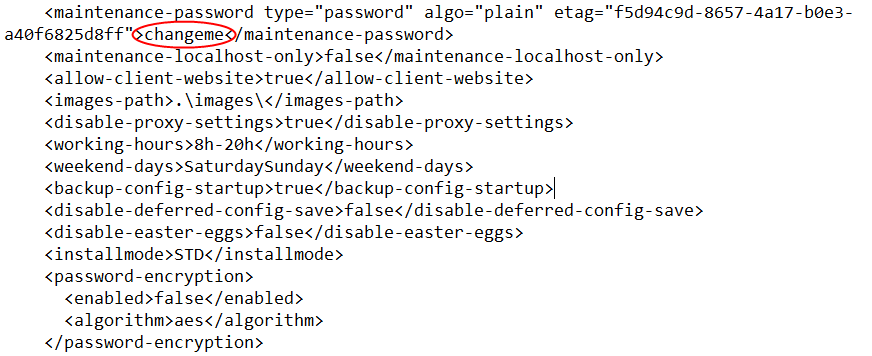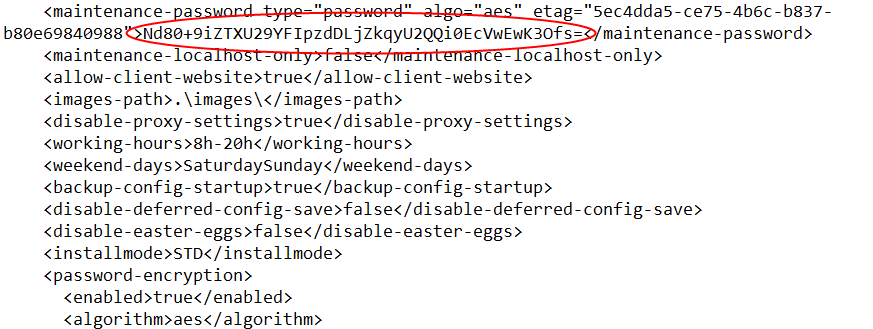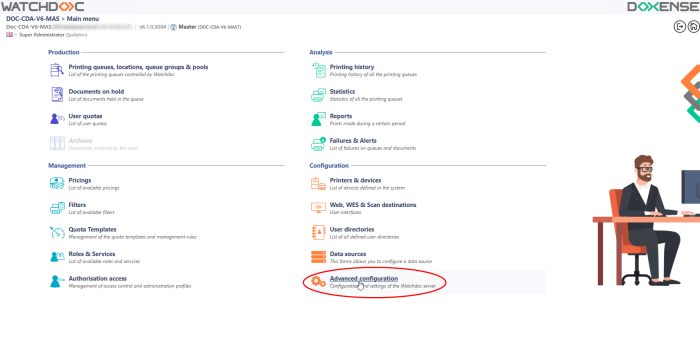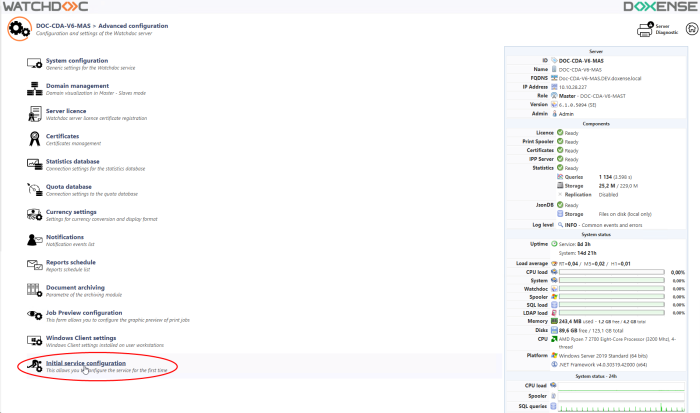Watchdoc - Obfuscation - Activate the administration passwords obfuscation
Principle
Watchdoc contains a number of passwords, stored in the general configuration file. It may be useful to obfuscate these passwords in order to secure the solution.
The Obfuscation![]() is the act of creating computer code (= instructions used to program computers) that is difficult for humans to understand, in order to reduce the code size and hide it from other people.
(Source: https://dictionary.cambridge.org) function (v.5.2 min.) secures the tool by encrypting the passwords in the Watchdoc solution configuration file (config.xml). When this function is activated, the passwords no longer appear in clear text in the Watchdoc configuration file.
is the act of creating computer code (= instructions used to program computers) that is difficult for humans to understand, in order to reduce the code size and hide it from other people.
(Source: https://dictionary.cambridge.org) function (v.5.2 min.) secures the tool by encrypting the passwords in the Watchdoc solution configuration file (config.xml). When this function is activated, the passwords no longer appear in clear text in the Watchdoc configuration file.
This option makes the tool more secure by making administration passwords unreadable.
The encryption function uses the AES![]() Advanced Encryption Standard (AES), also known as Rijndael, is a symmetric encryption algorithm approved by the National Security Agency (NSA) as part of its B1 suite of cryptographic algorithms, and is currently the most widely used and secure. (Source: Wikipedia) algorithm.
Advanced Encryption Standard (AES), also known as Rijndael, is a symmetric encryption algorithm approved by the National Security Agency (NSA) as part of its B1 suite of cryptographic algorithms, and is currently the most widely used and secure. (Source: Wikipedia) algorithm.


Process
The passwords obfuscation option may have been set during the Watchdoc installation.
To check or to activate this feature after the Watchdoc installation:
-
access the Watchdoc administration interface as an administrator;
-
from the Main Menu, section Configuration, click on Advanced configuration;

-
in the Advanced configuration interface, click on Initial service configuration;

-
in the Initial service configuration interface, Watchdoc Service section:
-
Enable Obfuscation: Check the box if you want to obfuscate the passwords of the configuration file using the 258-bit AES
 Advanced Encryption Standard (AES), also known as Rijndael, is a symmetric encryption algorithm approved by the National Security Agency (NSA) as part of its B1 suite of cryptographic algorithms, and is currently the most widely used and secure. (Source: Wikipedia) algorithm.
Advanced Encryption Standard (AES), also known as Rijndael, is a symmetric encryption algorithm approved by the National Security Agency (NSA) as part of its B1 suite of cryptographic algorithms, and is currently the most widely used and secure. (Source: Wikipedia) algorithm.
-
Check on the Config.xml file that the password which were readable before, are then unreadable.